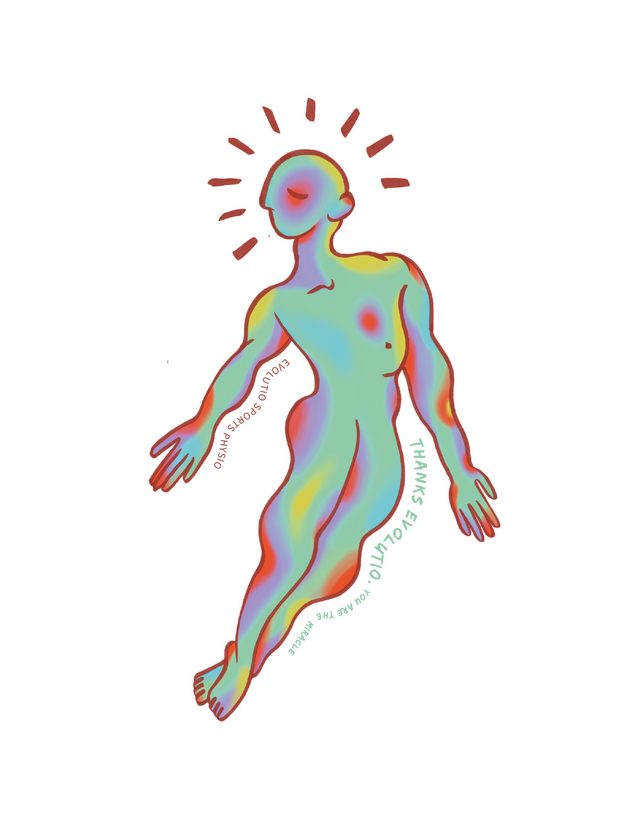How to Relieve Latissimus Dorsi Pain
Relieving latissimus dorsi pain involves stretching, strengthening exercises, and self-care techniques. Stretching is crucial to alleviate tightness in the latissimus dorsi muscles. You can perform stretches like the doorway stretch or the child's pose in yoga to target the lat muscles. Hold each stretch for at least 15-30 seconds, focusing on breathing deeply to enhance relaxation and flexibility.
Strengthening exercises help to prevent future pain and promote overall muscle balance. Incorporate exercises such as lat pulldowns, rows, and pull-ups into your routine, gradually increasing intensity as your strength improves. Ensure proper form during these exercises to avoid straining the muscles. Additionally, core strengthening exercises can provide stability and support to the spine, indirectly relieving stress on the latissimus dorsi.
Applying heat or cold therapy can be beneficial in reducing inflammation and easing muscle discomfort. You can use a heating pad or warm compress for 15-20 minutes to enhance blood flow and promote muscle relaxation. Alternatively, ice packs can be applied for short durations to help numb the area, reducing swelling and pain. It's essential to listen to your body and adjust the temperature and duration based on your comfort level.
Massage and foam rolling are effective self-care techniques for relieving latissimus dorsi pain. A gentle massage or foam roller on the affected area can help release tension and improve blood circulation. Focus on rolling the foam roller over your upper back and sides, targeting the latissimus dorsi muscles. However, if the pain persists or worsens, it's advisable to consult with a healthcare professional or a physiotherapist for a more personalized assessment and treatment plan.
How can a Physiotherapist relieve latissimus dorsi pain?
Physiotherapists or physical therapists are highly skilled healthcare professionals who can play a vital role in addressing and alleviating latissimus dorsi pain. First and foremost, a physiotherapist conducts a thorough assessment to identify the root causes of the pain. This assessment includes evaluating posture, movement patterns, and the overall condition of the musculoskeletal system. By understanding the specific factors contributing to latissimus dorsi pain, the physiotherapist can tailor a treatment plan that directly addresses the individual's needs.
Latissimus dorsi dry needling is a superb way to release the lats, with the physiotherapist placing needles through the latissimus dorsi muscle and the patient lying face down. This can help to remove those tight muscle fibres and help relieve latissimus dorsi pain.
One key aspect of physiotherapy for latissimus dorsi pain involves targeted exercises. The physiotherapist prescribes a customized exercise program to enhance the flexibility and strength of the latissimus dorsi muscles. This may include stretching exercises to alleviate tightness and strengthening exercises to promote proper muscle balance. The exercises are progressively adjusted based on the individual's progress, ensuring a gradual return to pain-free movement and function.
Additionally, physiotherapists employ manual therapy techniques to address muscle tightness and joint mobility directly. Hands-on approaches, such as massage, joint mobilization, and soft tissue manipulation, can help release tension in the latissimus dorsi muscles and surrounding areas. These manual techniques provide immediate relief and improve overall rehabilitation by improving blood circulation and promoting tissue healing. The holistic approach of physiotherapy encompasses education, exercises, and manual therapy to effectively manage and alleviate latissimus dorsi pain, fostering long-term recovery and preventing future issues.
Why Would I have a Painful Latissimus Dorsi?
Pain in the latissimus dorsi muscle can be attributed to various factors, and understanding the potential reasons behind the discomfort is crucial for effective management. One common cause of painful latissimus dorsi is muscle strain or overuse. This can occur due to repetitive movements or activities that involve the arms and shoulders, such as lifting heavy objects, prolonged periods of reaching overhead or performing exercises without proper form. Poor ergonomics and posture in daily activities and during exercise can overload the latissimus dorsi muscle and result in pain.
Injuries and trauma to the back can also lead to painful latissimus dorsi. Accidents, falls, or sudden impacts can cause strains, sprains, or tears in the muscle fibres of the latissimus dorsi. Athletes engaged in sports that require intense use of the upper body, like rowing or rock climbing, may be particularly prone to these injuries. Additionally, individuals who perform repetitive motions in their jobs or activities, such as manual labour or certain types of dance, may experience chronic strain in the latissimus dorsi, contributing to persistent pain.
Underlying medical conditions can exacerbate or contribute to painful latissimus dorsi. Conditions like myofascial pain syndrome, fibromyalgia, or referred pain from issues in the spine or internal organs can manifest as discomfort in the latissimus dorsi region. Nerve impingement, thoracic outlet syndrome, or even cardiovascular issues may cause pain that radiates to the latissimus dorsi area. It's essential to consult with a healthcare professional to determine the pain's precise cause and develop an appropriate treatment plan, including physical therapy, pain management techniques, or other interventions based on the underlying issue.
What can feel like Latissimus Dorsi Pain but is not?
Several conditions may mimic latissimus dorsi pain, making an accurate diagnosis crucial for effective treatment. One common source of discomfort in the upper back is thoracic spine dysfunction. Issues such as facet joint irritation, muscle strains, or disc-related problems in the thoracic spine can produce pain that radiates to the latissimus dorsi region. A thorough examination by a healthcare professional, including orthopedic or neurological assessments, can help differentiate between latissimus dorsi pain and issues originating from the thoracic spine.
Another potential cause of pain in the same region is myofascial trigger points. These are localized muscle tightness and tenderness areas that refer to pain sin surrounding areas, including the latissimus dorsi. Trigger points may develop due to overuse, poor posture, or muscle imbalances. A skilled healthcare provider, such as a physiotherapist or massage therapist, can identify and treat trigger points through techniques like trigger point release, helping to alleviate pain that may initially seem to boriginatefrom the latissimus dorsi muscles.
Additionally, conditions affecting the shoulder, such as rotator cuff injuries or inflammation, can manifest as pain in the upper back, mimicking latissimus dorsi discomfort. Shoulder issues may radiate pain along the upper back and shoulder blade, creating confusion about the source of the pain. A comprehensive assessment by a healthcare professional, possibly including imaging studies, can help identify the precise cause of the pain and guide appropriate treatment strategies. Whilelatissimus dorsi pain is joint; other musculoskeletal and orthopedic conditions can present with similar symptoms, underscoring the importance of a thorough evaluation for an accurate diagnosis.





